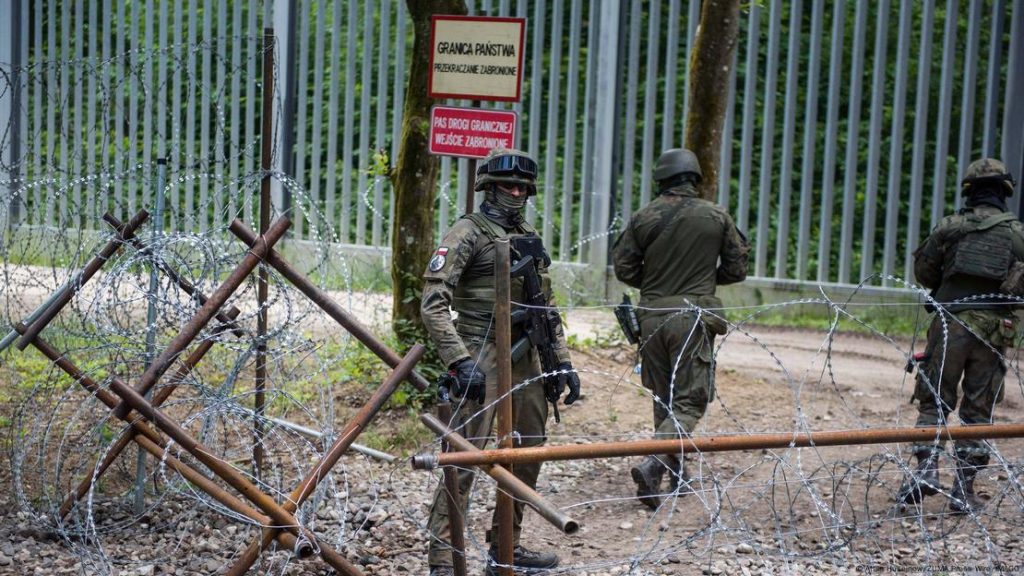
Source: BBC
A metal fence built on the Polish-Belarusian border splits Poland’s authorities and human rights organisations. For some, it is an unbreakable barrier against irregular migration, while for others, it is a lethal trap.
At its foot, hooded Polish soldiers wield machine guns as they monitor the border, a flashpoint between Warsaw and Minsk, whom Poland blames for organising the influx of migrants.
“Migration is artificially directed here,” said Michal Bura, a spokesman for the Podlasie district border guards who joined the patrol in his four-wheel drive.
“The Belarusian services help the migrants, transport them from one place to another, and equip them with tools they need to cross this barrier, such as pliers, hacksaws, and ladders,” the official said.
This month, the five-meter-high (16-foot) metal barrier along the border, completed in 2022, was reinforced with metal bars and another layer of barbed wire.
Warsaw has also deployed new cameras every 200 metres along the border to detect migrants before they even try to cross. Since 2021, thousands of migrants and refugees, mostly from the Middle East and Africa, have attempted to enter Poland through Belarus, an EU and NATO territory.
Bura stated that the fence’s modernisation, scheduled to be completed by the end of the year, was already taking effect.

Source: DW
Fearing Russia, Poland has also announced it would spend over 2.3 billion euros on an “eastern shield”—a system of military fortifications along the border, which will make it even more difficult for migrants to cross.
But, according to border guards, while the overall number of crossings fell as winter arrived, it had already reached 28,500 by mid-November compared with 26,000 in total last year.
“Crossings have decreased significantly” along the reinforced areas, he added.
Fearing Russia, Poland has stated that it will spend more than 2.3 billion euros building an “eastern shield”—a series of military barriers along the border that will make crossing even more difficult.
However, according to border guards, while the overall number of crossings reduced as winter approached, it had already reached 28,500 by mid-November, up from 26,000 the previous year.


